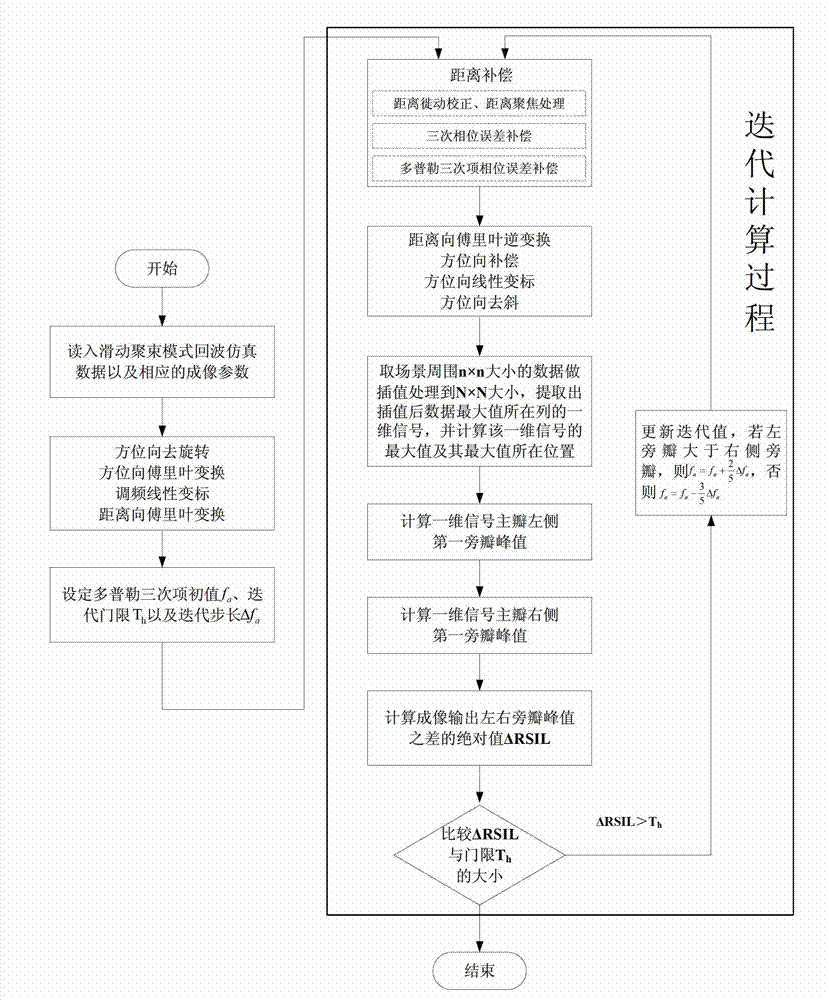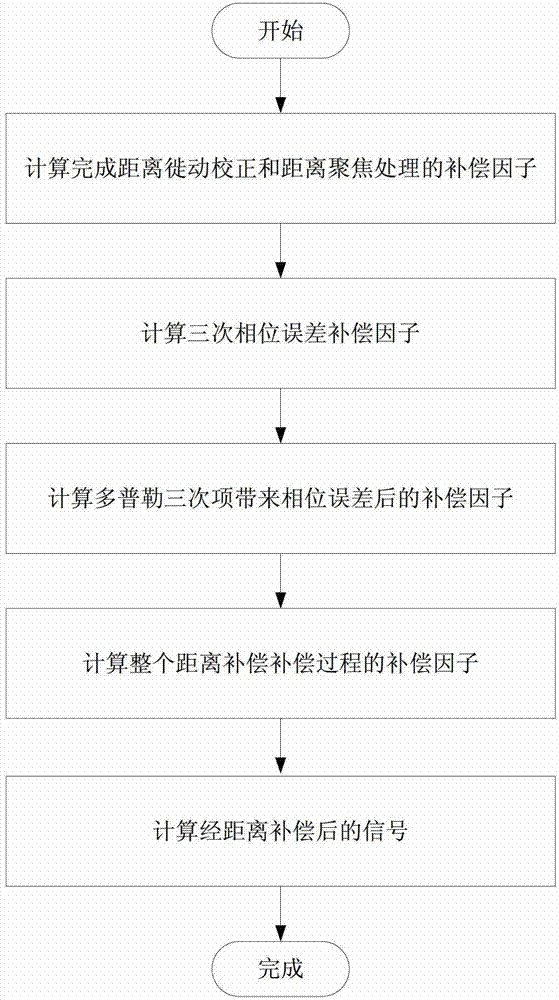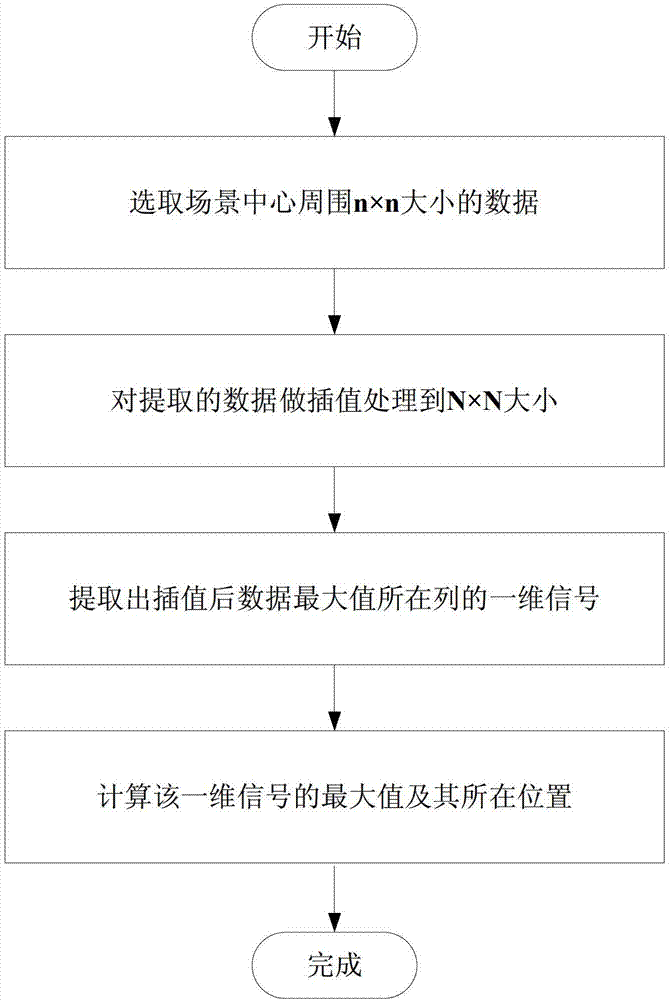Satellite-borne synthetic aperture radar (SAR) imaging method based on Doppler cubic term estimation
A Doppler cubic term and synthetic aperture radar technology, which is applied in the field of signal processing, can solve problems such as asymmetric distortion, target ghosting, and affecting imaging quality, and achieve strong practicability, strong practicability, and improved iteration efficiency. Effect
- Summary
- Abstract
- Description
- Claims
- Application Information
AI Technical Summary
Problems solved by technology
Method used
Image
Examples
Embodiment
[0094] A spaceborne synthetic aperture radar imaging method based on Doppler cubic term estimation of the present invention, specifically:
[0095] Step 1: Read in the echo simulation data S(τ,t;r) of the spaceborne SAR sliding spotlight mode and the corresponding imaging parameters, including: the number of sampling points N in azimuth a =32768, the number of sampling points N in the distance direction r =4096, signal sampling rate f s =600MHz, signal bandwidth Bw=500MHz, pulse repetition frequency PRF=4500Hz, reference slope distance R ref =837km, Doppler center frequency f d0 = 4.5Hz, Doppler modulation frequency f r0 =4012.4Hz / s, satellite speed P v =7230m / s, equivalent oblique angle Signal wavelength λ=0.03m, signal propagation speed c=3×10 8 m / s;
[0096] Step 2: The echo simulation data S(τ,t;r) is sequentially subjected to azimuth derotation processing, azimuth Fourier transform, frequency modulation linear scaling processing, and distance Fourier transform pro...
PUM
 Login to View More
Login to View More Abstract
Description
Claims
Application Information
 Login to View More
Login to View More - R&D
- Intellectual Property
- Life Sciences
- Materials
- Tech Scout
- Unparalleled Data Quality
- Higher Quality Content
- 60% Fewer Hallucinations
Browse by: Latest US Patents, China's latest patents, Technical Efficacy Thesaurus, Application Domain, Technology Topic, Popular Technical Reports.
© 2025 PatSnap. All rights reserved.Legal|Privacy policy|Modern Slavery Act Transparency Statement|Sitemap|About US| Contact US: help@patsnap.com



